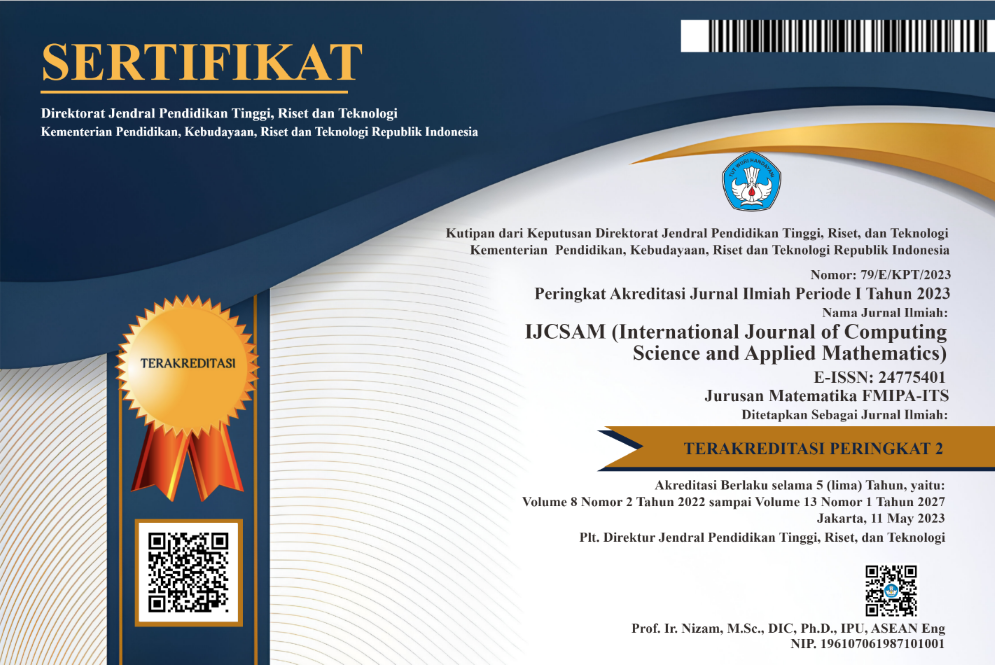Modeling Portfolio Based on Linear Programming for Bank Business Development Project Plan
Abstract
Keywords
Full Text:
PDFReferences
J. Pan and Q. Xiao, “Optimal asset–liability management with liquidity constraints and stochastic interest rates in the expected utility framework,” Journal of Computational and Applied Mathematics, vol. 317, pp. 371–387, 2017.
O. Babat, J. Vera, and L. Zuluaga, “Computing near-optimal value-at-risk portfolios using integer programming techniques,” European Journal of Operational Research, vol. 266, no. 1, pp. 304–315, 2018.
B. Indonesia, “Jakarta: Otoritas jasa keuangan,” 2018.
S. Riyadi, “Banking assets and liability management,” 2003.
T. Bellini, “Integrated bank risk modeling: A bottom-up statistical framework,” European Journal of Operational Research, vol. 230, no. 2, pp. 385–398, 2013.
L. Onyiriuba, Bank risk management in developing economies: Addressing the unique challenges of domestic banks. Academic Press, 2016.
P. Jensen and J. Bard, Operations research models and methods. John Wiley & Sons, 2002.
F. Hillier and G. Lieberman, ISE Introduction to Operations Research. McGraw-Hill Interamericana de Espana S.L., 2021.
DOI: http://dx.doi.org/10.12962%2Fj24775401.v8i1.6467
Refbacks
- There are currently no refbacks.
View My Stats

International Journal of Computing Science and Applied Mathematics by Pusat Publikasi Ilmiah LPPM, Institut Teknologi Sepuluh Nopember is licensed under a Creative Commons Attribution-ShareAlike 4.0 International License.
Based on a work at https://iptek.its.ac.id/index.php/ijcsam.






